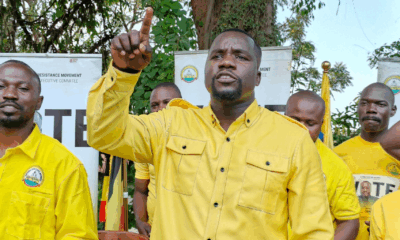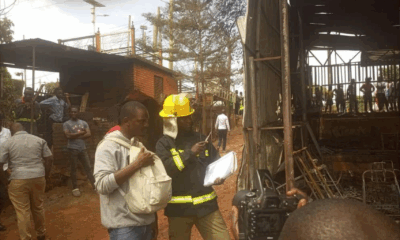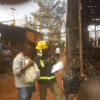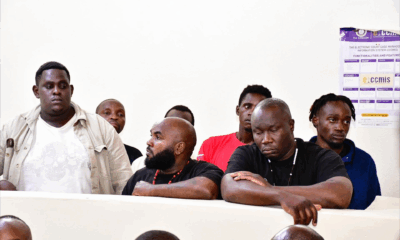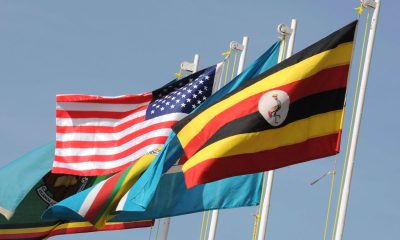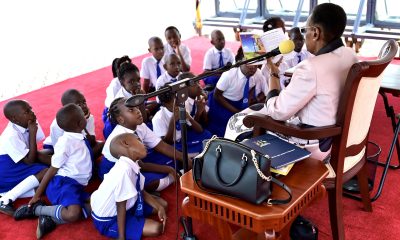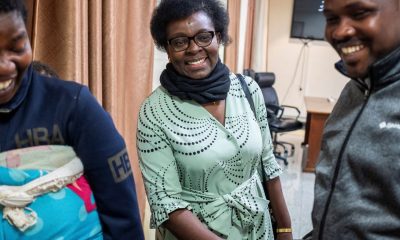News
Rusumo’s benefit-sharing interventions an example for major infrastructure projects in the region
Transboundary dam project sets laudable example for large infrastructure projects
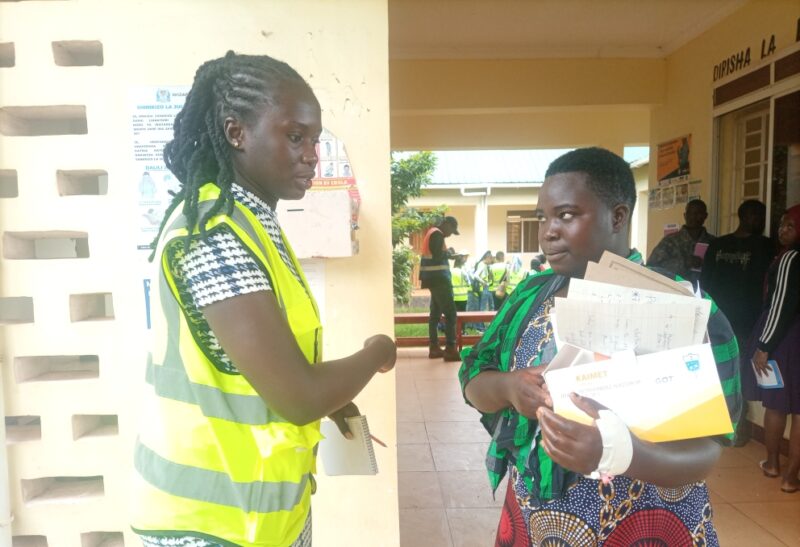
Vestina Samson, 22, (pictured right) a resident of Rusumo village, speaking to Kenyan journalist Laura Otieno, about health services she receives at Rusumo health centre.
Vestina Samson, a 22-year old resident of the border village of Rusumo, on the side of Tanzania near Rwanda, no longer has to trek 34 kms to access healthcare services in Ngara hospital.
This is thanks to a generous but also deliberate donation of a health facility that has started to provide improved healthcare services to more than 1,200 residents as well as travellers.
The health center, soon to be completed, is one of many projects that have been built in the districts bordering the Regional Rusumo Hydro Power dam on the Akagera river.
The hydro-power project is jointly owned by Burundi, Rwanda and Tanzania.
The Nile Equatorial Lakes Subsidiary Action Plan Co-ordinating Unit, (NELSAP-CU), a branch of the Nile Basin Initiative (NBI), spearheaded the development of the historic transboundary project.
Rusumo health centre offers a wide range of health services including antenatal and maternity care, dental care, outpatient and simple surgeries.
The health centre is the source of pride not only for Tanzanians, but also for the team at NELSAP-CU that is overseeing construction of dozens of such benefit-sharing projects in the areas surrounding the dam.
In Burundi, such projects are concentrated in areas that host river Ruvubu, which joins Akagera river at Rusumo.
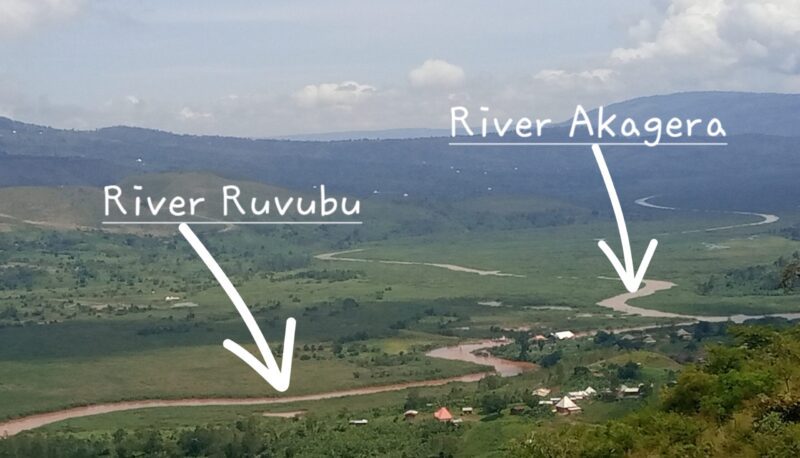
Rusumo HP dam is located just after the confluence of Rivers Ruvubu and Akagera. Picture taken from inside the perimeter fence of Rusumo health centre in Tanzania. Across the valley is Rwanda territory.
According to Dr. Prisca Temba, the in-charge of Rusumo Health centre, the facility currently provides health services to an average of 1024 patients every month.
Equipped with 54 beds, a modern labour ward that can enable cesarean section deliveries and staffed with 13 full-time midwives and other health workers, a laboratory and other services, the facility is the envy of many people who have physically visited it or simply heard about its services.
The health centre is one of the 21 social and economic Local Area Development Plan (LADP) interventions in Ngara district that NELSAP, the World Bank that funded the dam through loans and grants, and Ngara district officials agreed to be developed.
According to NELSAP, the interventions were developed as part of the Resettlement Action Plan for the Hydropower project, but also in response to demands from the project-affected community that they needed to witness direct benefits of the Rusumo project.
Mr. Anthony Byuma, the Environmental and Compliance officer at NELSAP further noted that the social infrastructure projects were developed to extend the benefits of Rusumo Hydropower dam, beyond just providing electricity.
US$5 million was initially allocated to each country for the social projects. This was later boosted to US$10 million to address concerns from the community that they needed more benefits since they were not the main beneficiaries of the electricity and yet they shoulder the impacts of the project.
NELSAP-CU recently took journalists, including this writer, on a tour of some of the social infrastructure projects that have been developed.
In all three countries that jointly own Rusumo HP project, the money has been used to build schools, health centres, provide support to farmers, the business community and helped provide clean drinking water to communities.
Besides Rusumo health centre, the people of Ngara owe Rusumo hydro-power project of debt of gratitude for a number of iconic infrastructure projects in their district.
Ngara high school in Tanzania, located about ten kilometers from the border with Rwanda, is one of the legacy projects of Rusumo. It received major infrastructure boost in the form of a spacious multi-purpose hall that also doubles as their dining hall, a dormitory and an administration block.

Mr. Eliabu Mpita, the Headteacher of Ngara high school, appreciated NELSAP-CU for the infrastructure improvements including the dining hall, (captured in the background)
The school headmaster Mr. Eriabu Mpita hailed the project for lifting the conditions of the learners which has also endeared more students to join the school.
“We are grateful to NELSAP and their partners for giving us these beautiful structures. Previously, our students were for example having their meals under tree sheds, but that is now history,” said Mr. Mpita.
A new administration block changes the skyline of Ngara
At Ngara district headquarters, another transformation has taken place. A new magnificent one-storey district administration block has been erected to replace the relic that was left behind by colonialists.
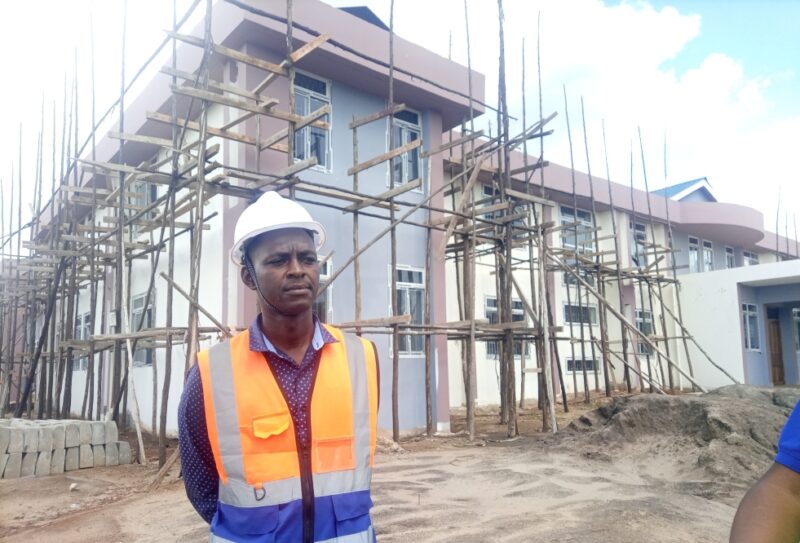
Mr. Silverter Kiluswa, the site engineer for Ngara district headquarters standing outside the block shortly before it was completed
The magnificent structure consists of 70 offices and two conference rooms.
According to Byuma, completion of the building is expected to attract more businesses to the area because it will act as a one-stop centre for most government functions such as tax administration, business registration, that have been scattered in different places.
The transformative effect of Rusumo Hydropower project was further extended to the business community of Ngara and the wider Tanzania through construction of a strategic market at Kahaza.
The strategic market, located about 15kms to the Rwandan border, is expected to act as a place where manufacturers and whole sellers will stockpile their products ready for export to nearby Rwanda.
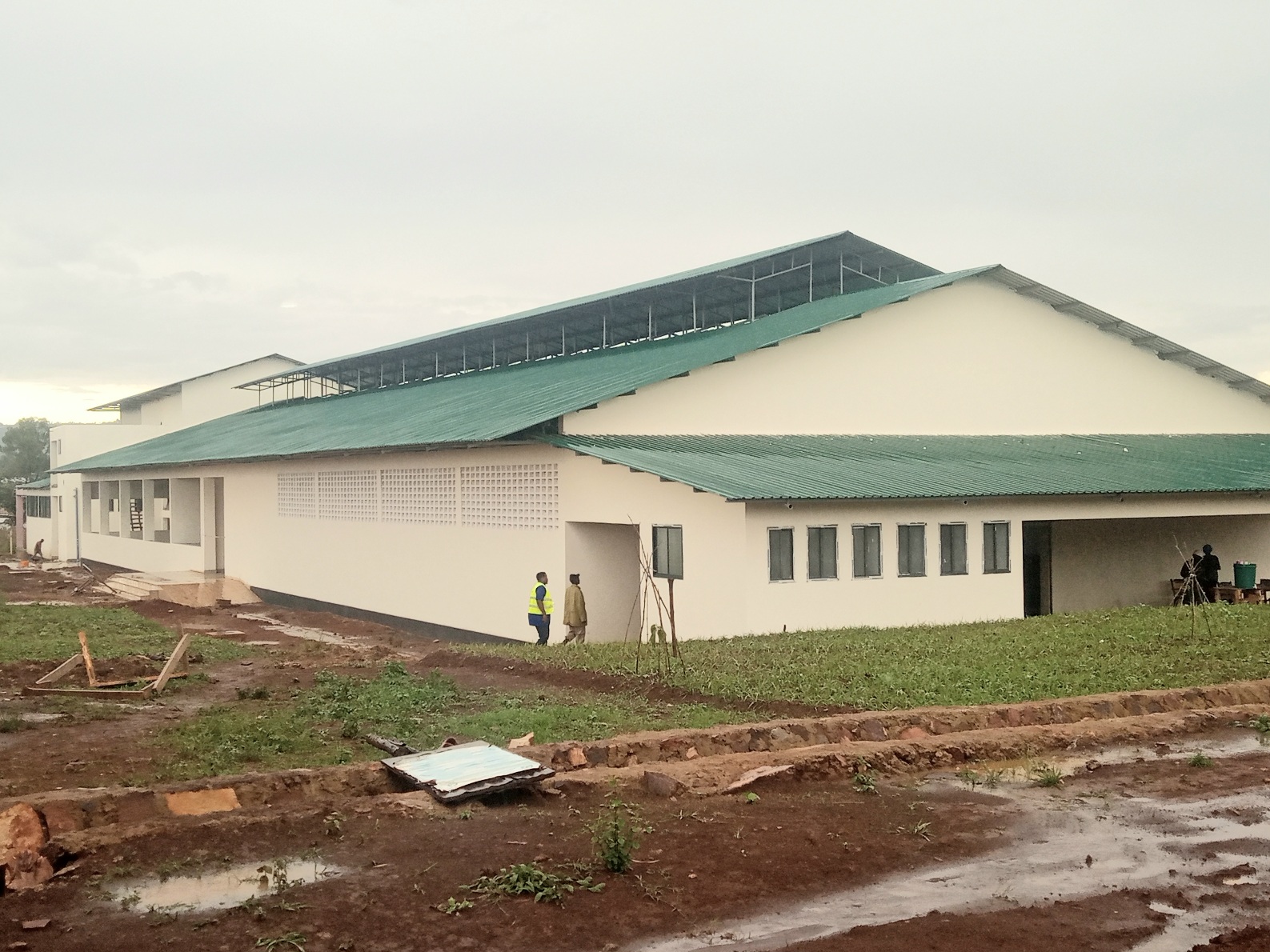
Kahaza strategic market is one of the numerous LADP projects for Ngara district
This is expected to drastically reduce the time it currently takes suppliers to deliver merchandise from factories located hundreds of kilometers away from the country’s industrial hubs such as Dar-es-Salaam or Mwanza, to clients in Rwanda.
Eng. Jacob Manyoun Deng, the Regional Power Program Officer of NELSAP, told this reporter that the design of the LADP projects was a deliberate measure meant to lift the lives of the people who host the power plant.
The success of the LADP projects has not only brought immense pride to NELSAP and the beneficiary community, Eng. Deng believes, the demonstrated life-changing effects of Rusumo will serve as an inspiration for developers of similar projects in the region.
“There are a number of major infrastructure projects worth millions of dollars that are being developed across the region. The success of the Rusumo LADP projects is enough proof that a lot of development can be brought to the people hosting such major projects, for a fraction of the total cost of the power project,” said Eng. Deng.
Mr. Anthony Byuma attributed the success of the LADP projects, to the strict adherence to the zero tolerance for corruption standards, effective supervision from the NELSAP team who oversaw the project to ensure value for money.
Mr. Gaspard Bikwemu, an environment officer at NELSAP highlighted some of the mechanisms that were put in place to achieve value for money and avoid waste.
“To avoid corruption, the procurement was made by the district committee and during the implementation the payment was made by NELSAP after the invoice was approved by the consultant,”
In Rwanda, similar socially transformative projects have been built and are already in use.
They include health centres, clean water distribution systems, and youth empowerment facilities.
At Kazo health centre in Ngoma district for example, the project helped build a health centre and equipped it with modern facilities usually seen in hospitals or upscale private health facilities in Uganda.
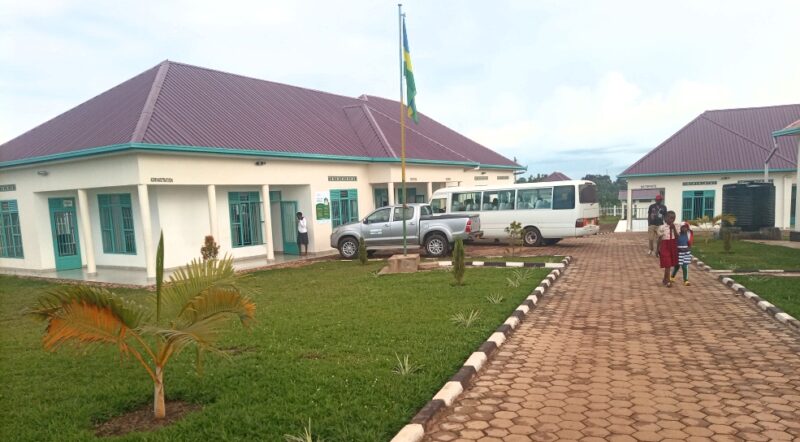
Kazo health centre in Ngoma district of Rwanda
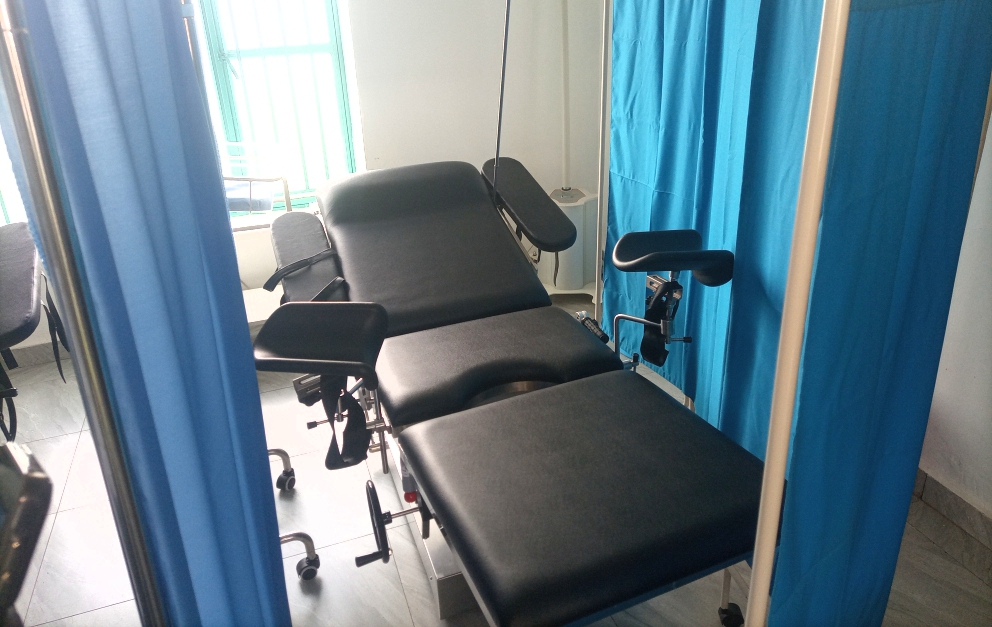
One of the labour beds and other modern equipment that patients enjoy when they visit Kazo health centre in Ngoma district of Rwanda.
The health centre also provides unique services such as mental health services and treatment for non-communicable diseases such as hypertension.
Besides the health facilities, the district of Ngoma and Kirehe in Rwanda also received improved water treatment and distribution system at Gatonde-Gahima and a youth centre at Ngoma district headquarters, among other projects. The youth centre is equipped with Internet -enabled computers to inspire innovation among young people.
About Rusumo HP project
Rusumo HydroPower project located at the border between Rwanda and Tanzania is an 80Megawatt hydro power dam owned equally by Burundi, Rwanda and Tanzania.
It was constructed at a cost of US$340 million obtained through loans and grants from the World Bank to the three countries.
Since March 2025, the Rusumo Hydropower project has been generating around 80MW, distributing it equally to its shareholders through dedicated transmission lines.
If Rusumo’s LADP approach were to be used as a template for such large-scale energy projects in the region, the public’s appreciation of the river’s importance would perhaps be higher than it is today.
Comments



